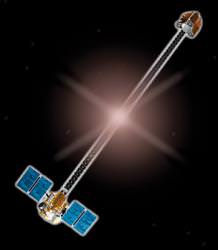You can’t keep a good mission down. I guess you can. Actually, it seems like most good missions are kept down (Terrestrial Planet Finder, anyone?). But once, it looks like the good guys are going to win. A cool mission to search for black holes has been resurrected, and will fly in space after all. Wise move NASA, send a spacecraft to help solve one of the most puzzling mysteries in modern astronomy.
The mission is called the Nuclear Spectroscopic Telescope Array, or NuSTAR. NASA was originally planning this mission, capable of detecting nearby black holes with unprecedented sensitivity, but they decided to shelve it because of funding pressures back in 2006.
NuSTAR is part of NASA’s Explorers Program. These are low-cost, regular missions to help solve a specific challenge in astronomy. Previous missions include Swift (for tracking down gamma ray bursts), and GALEX (which performs ultraviolet astronomy). Another mission, WMAP, told us that the Universe is 13.7 billion years old.
If all goes well, NuSTAR will be launched in 2011, bridging the gap between the 2009 launch of the Wide-field Infrared Survey Explorer, and the 2013 launch of the James Webb Space Telescope.
Once in space, it’ll perform deep observations in hard X-rays, searching for the telltale signature of black holes of various sizes and other exotic and extreme objects.
Bad Astronomer Phil Plait was actually involved with the program and gives a personal history about it here.
Original Source: NASA News Release

